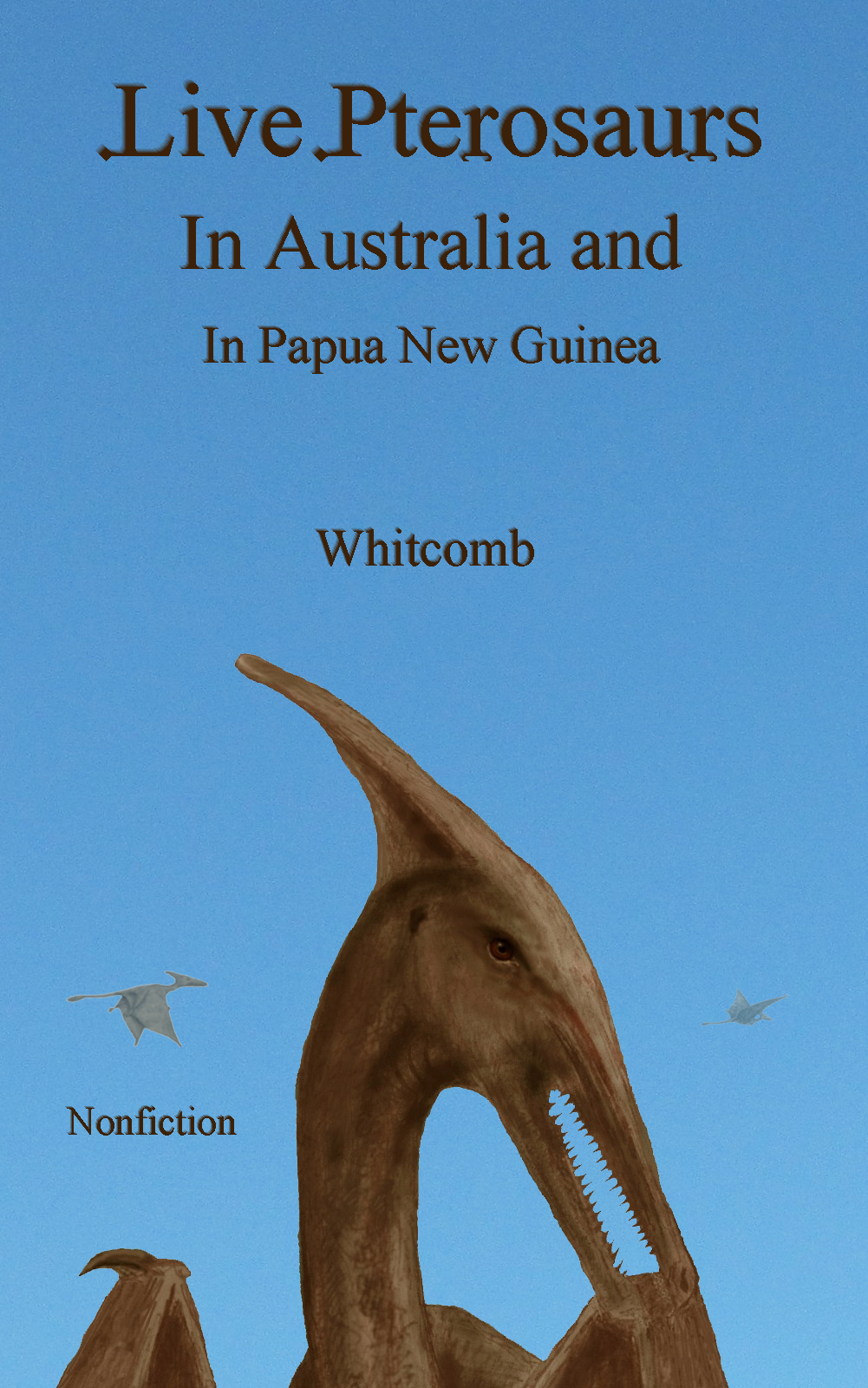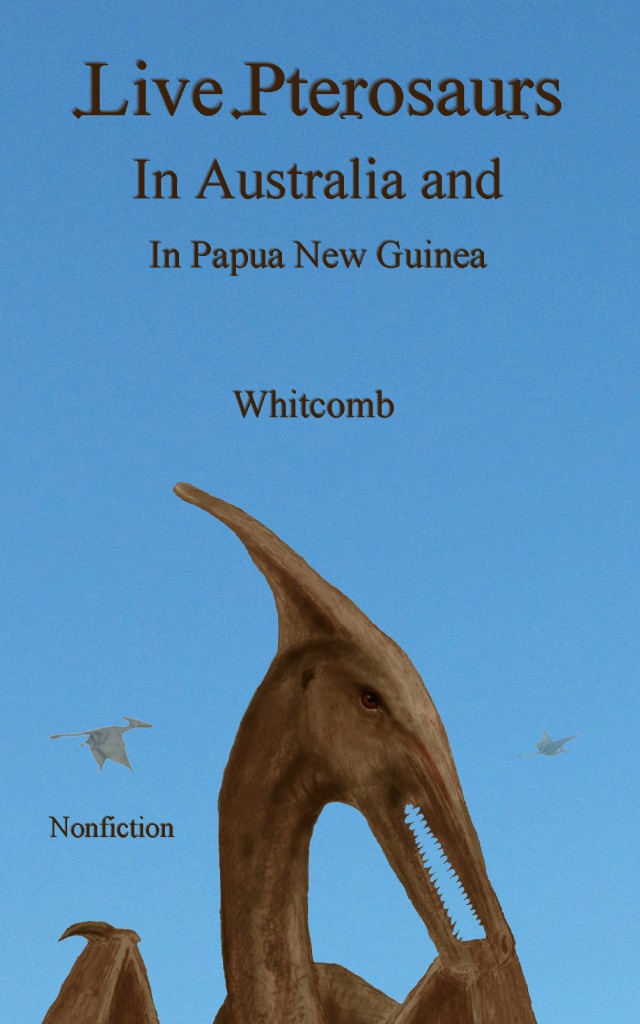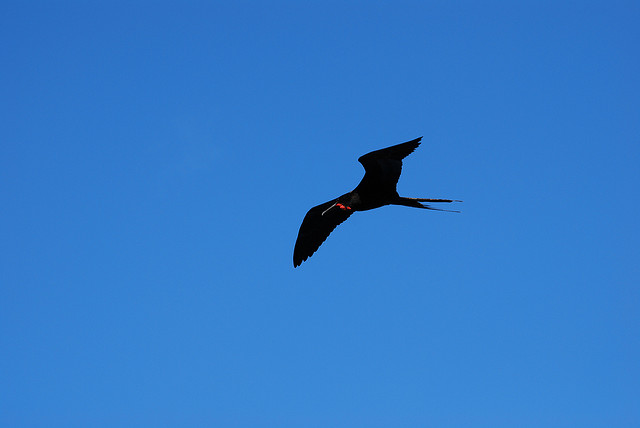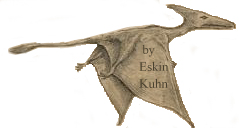First let’s consider a pterosaur sighting in Africa and compare it with one in Australia. The extremes are distance from observer to flying creature: 10 feet away and 17,000 feet away. Neither of these encounters are found in the third edition of Live Pterosaurs in America or the second edition of Searching for Ropens (my nonfiction cryptozoology books of sightings of apparent pterosaurs). I plan to include them in an e-book, to be published soon.
Pterosaur in Sudan, Africa
“Walking from one mud-brick hut to another, early one night in 1988 (in Sudan, Africa), the boy noticed something on the roof of a nearby hut. Lit up by the patio light, perched on the edge of the roof, the creature appeared to be four-to-five feet tall . . . and leathery (no feathers). A “long bone looking thing” stuck out the back of its head, and its long tail somehow resembled that of a lion.”
That “kongamato-pterodactyl” web page fails to mention, however, that the creature hopped from one mud-brick hut to another RIGHT OVER THE BOY’S HEAD. The distance between the feet of the creature and the head of the boy must have been about ten feet, if that much. After the boy had grown into a man, he gained access to a computer (not everybody in Sudan has a computer) and sent me an email, with details about his encounter. I found his report highly credible, both in his honesty and in the high probability that it was a pterosaur.
Pterosaur, perhaps, in Victoria, Australia
I say “perhaps” because the flying creature, observed in about 1998, was so far away from the eyewitness. I say “pterosaur” because the sighting is consistent with other sightings in Australia, encounters that were much closer to the eyewitnesses, and because the creature appeared to be about the size of a “Cesna” but was slowing flapping its wings. After receiving a long email from the Australian man, I came to believe that he had seen what he suspected he had.
What I saw was what I first thought was a pelican flying about 3000 feet high but realised pelicans at that height did not look as large as this. I was standing outside about nine o’clock one night. It was full moon and very bright with a cloud bank to the south east extending to and over the Ranges. Mt. Dandenong is about 2000 feet high and the clouds were much higher than this.
I glanced to the south and something caught my attention. It was something flying that appeared to be at the height of light planes that fly around here as Moorabbin Airport is not far away. This thing was at least as large as a light plane, say a Cesna. It was about 5 klms away and was lazily flapping it’s wings, flying to the east in at that point a clear sky. It appeared to be lit up by the moonlight and shining as if it had no feathers. . . . I could see it quite clearly. I had it under observation for about 5 mins whence it disappeared into the cloud bank.
Extremes in Delayed Reactions
From the third edition of Live Pterosaurs in America, a lady gives us a positive perspective on her two 2008 encounters in Georgia.
Fifteen miles of her commute [in northeast Georgia] is on a two-lane 55-mph road through woods alternating with pastures; This part of Highway 82 has few houses and almost no stop signs. . . . She had woken up early and could not get back to sleep, so she left her house [to drive to work] at 6:45 a.m. . . . She had driven less than ten miles, just leaving an area of pasture, entering an area of thick woods, around a mild downhill curve, with high banks and brush on each side of the road, when an animal suddenly flew from the right, just over the front of her car. Although alone, she yelled, “What the — what — what is that?” She was stunned.
She had another encounter two weeks later, at a different part of the same stretch of highway. But the point is how she looked back on her experiences with apparent living pterosaurs:
The lady used to dread her daily commute to work; that has changed. She told me, “The world is now totally different. I feel blessed that God has allowed me to see this creature that should not be here, and yet is, this strange dragon-like thing that lives somewhere in the woods in this redneck little town.”
Her experiences differ greatly from those of seven boys who encountered the giant ropen at Lake Pung:
On the remote island of Umboi, in Papua New Guinea, seven boys climbed up to Lake Pung, just north of their village. Within a few minutes they saw the giant creature fly over the water. The boys ran home in terror and the memory of that fear lasted for years. In 2004, Jonathan Whitcomb explored part of Umboi Island. He interviewed Gideon Koro, who confirmed their encounter, calling the creature by its local name: “ropen;” two other young men verified Gideon’s account.
Of course the circumstances between these cases differs considerably. Gideon and his friends were exposed to a creature that was notorious, on Umboi Island, for eating human flesh (at least taking dead human bodies from graves). The lady in Georgia was protected in her car, with no knowledge of any potential danger from any strange flying creature. With all that said, I suspect the flying creatures seen by these eyewitnesses (in Sudan, southern Australia, southeastern USA, and Umboi Island) are related, even if they represent different species.






